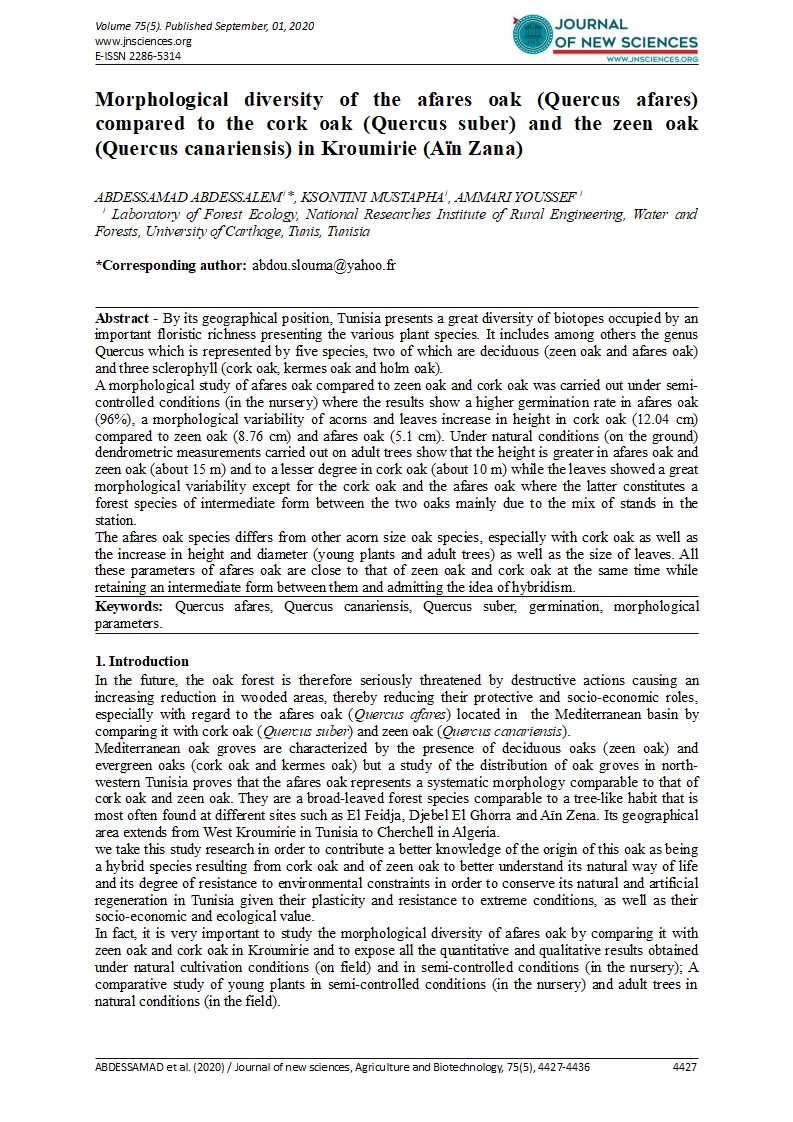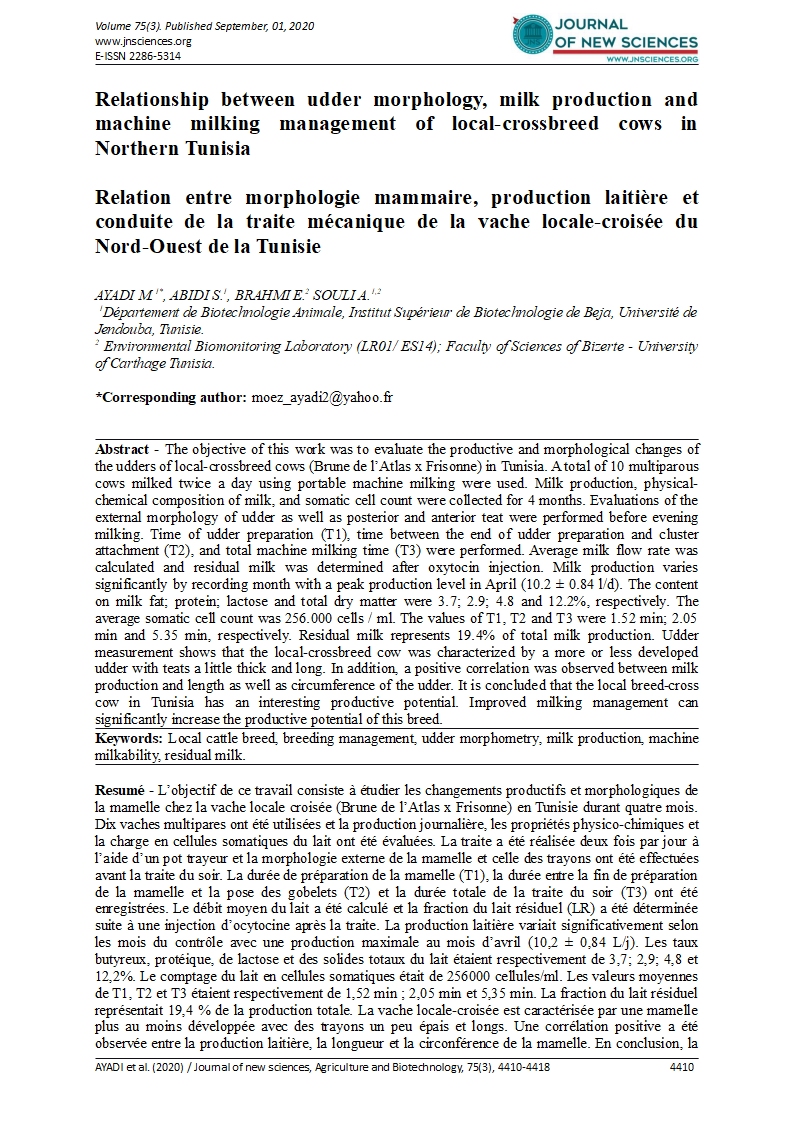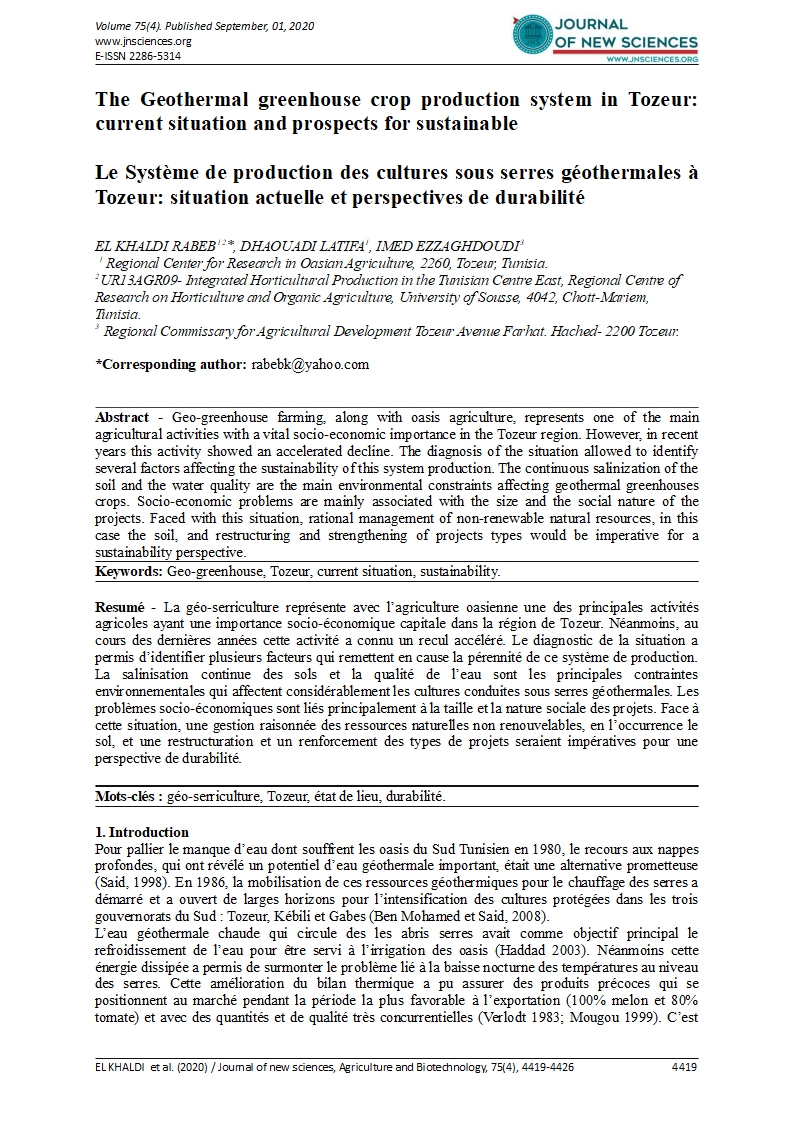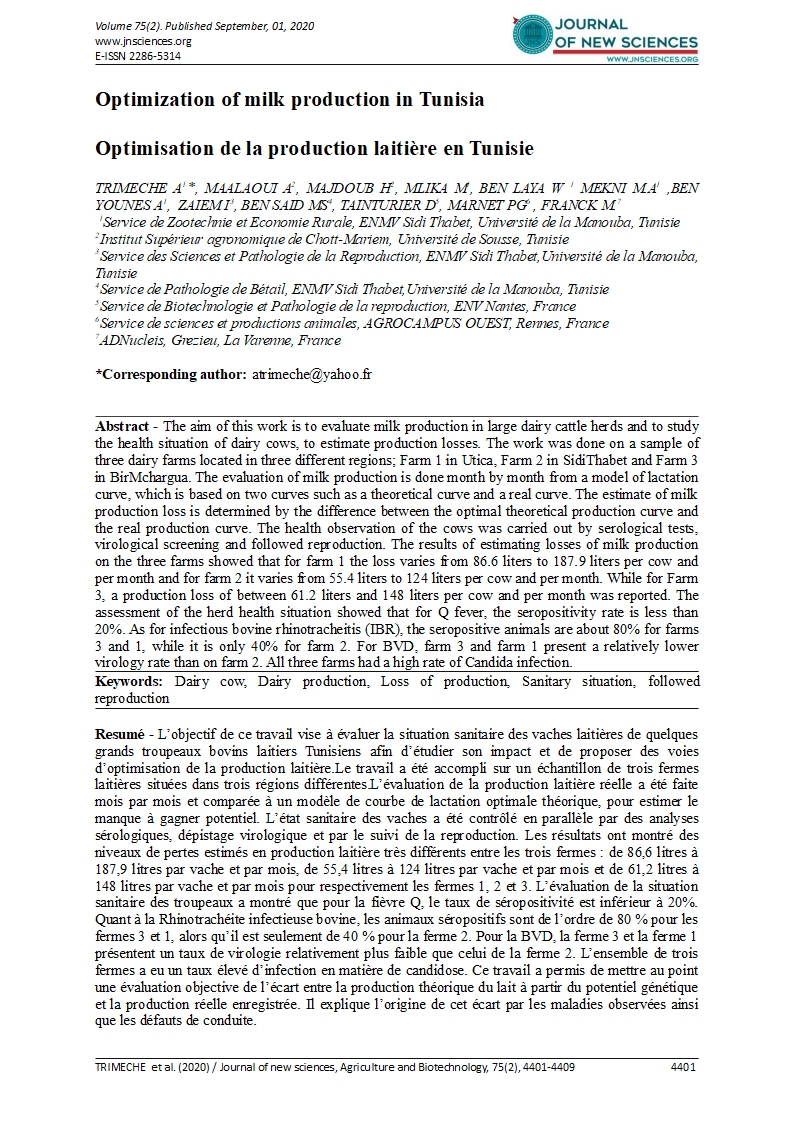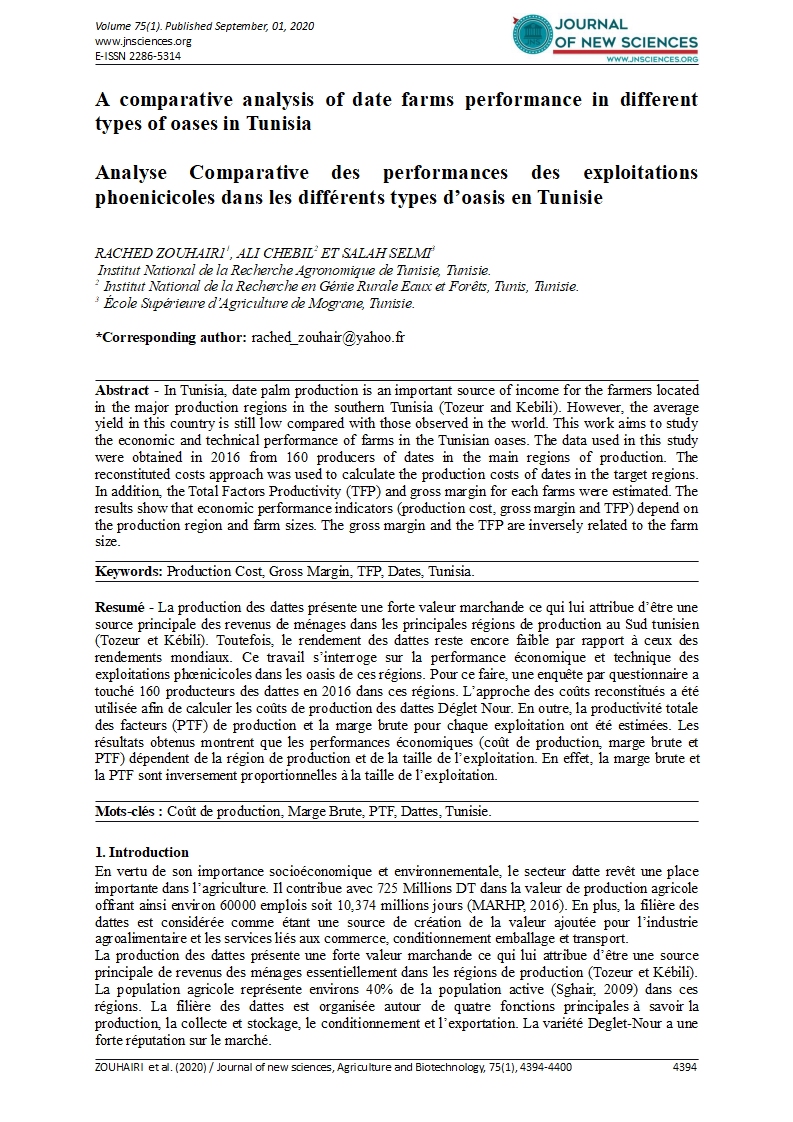- Category: Volume 75
- Hits: 2887
Nutritional value and secondary metabolite content in natural populations of Pistacia Lentiscus L. from northern Tunisia
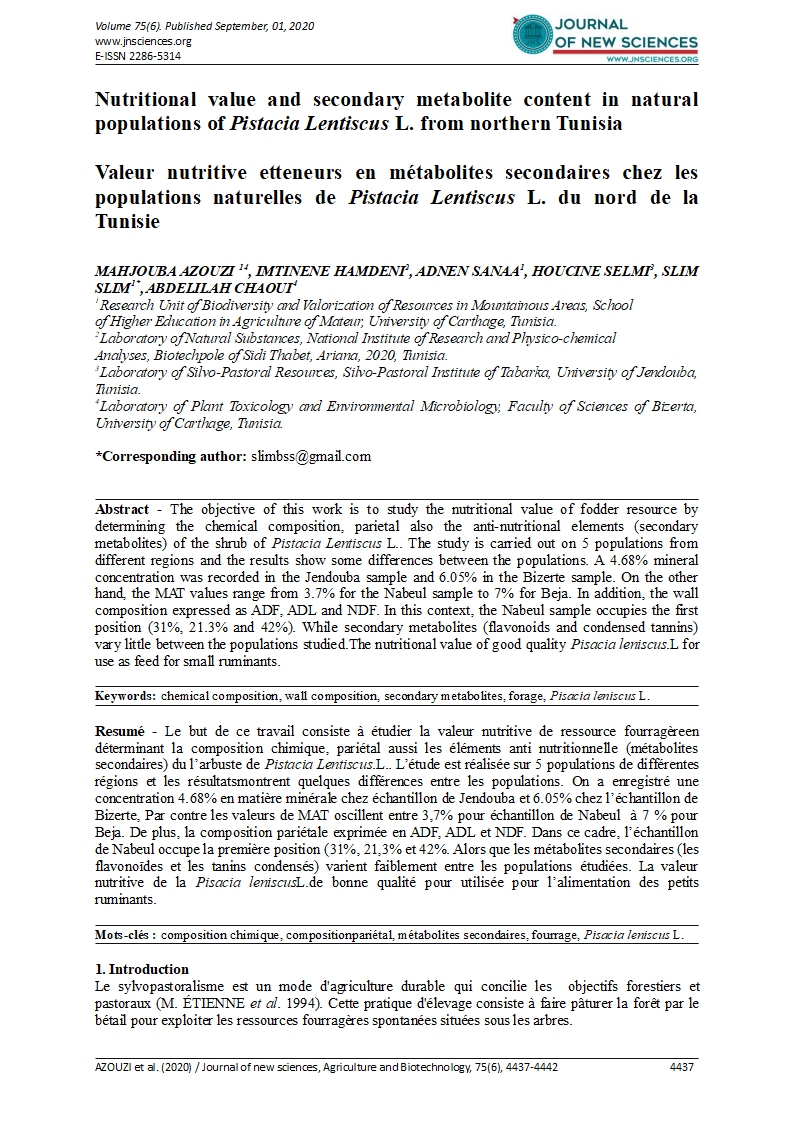
Valeur nutritive et teneurs en métabolites secondaires chez les populations naturelles de Pistacia Lentiscus L. du nord de la Tunisie
MAHJOUBA AZOUZI 14
IMTINENE HAMDENI2
ADNEN SANAA1
HOUCINE SELMI3
SLIM SLIM1*
ABDELILAH CHAOUI4
1Research Unit of Biodiversity and Valorization of Resources in Mountainous Areas, School
of Higher Education in Agriculture of Mateur, University of Carthage, Tunisia.
2Laboratory of Natural Substances, National Institute of Research and Physico-chemical
Analyses, Biotechpole of Sidi Thabet, Ariana, 2020, Tunisia.
3Laboratory of Silvo-Pastoral Resources, Silvo-Pastoral Institute of Tabarka, University of Jendouba, Tunisia.
4Laboratory of Plant Toxicology and Environmental Microbiology, Faculty of Sciences of Bizerta, University of Carthage, Tunisia.
Abstract - The objective of this work is to study the nutritional value of fodder resource by determining the chemical composition, parietal also the anti-nutritional elements (secondary metabolites) of the shrub of Pistacia Lentiscus L.. The study is carried out on 5 populations from different regions and the results show some differences between the populations. A 4.68% mineral concentration was recorded in the Jendouba sample and 6.05% in the Bizerte sample. On the other hand, the MAT values range from 3.7% for the Nabeul sample to 7% for Beja. In addition, the wall composition expressed as ADF, ADL and NDF. In this context, the Nabeul sample occupies the first position (31%, 21.3% and 42%). While secondary metabolites (flavonoids and condensed tannins) vary little between the populations studied.The nutritional value of good quality Pisacia leniscus.L for use as feed for small ruminants.
Keywords: chemical composition, wall composition, secondary metabolites, forage, Pisacia leniscus L.

